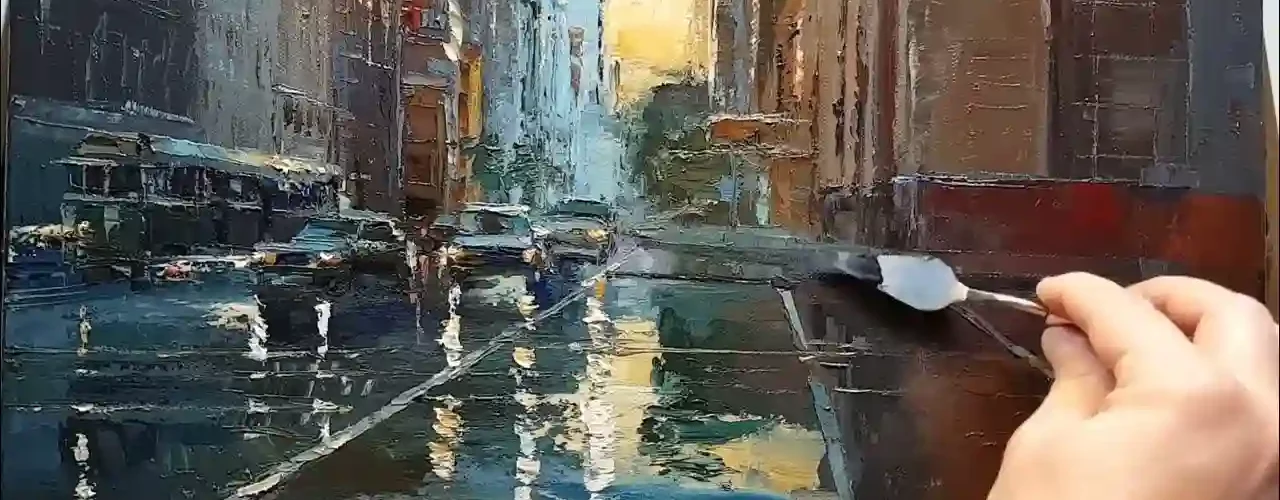Oil painting is a beloved art form that has captured the imaginations of artists and art enthusiasts for centuries. The rich and vibrant colors, the ability to blend and layer, and the longevity of oil paintings make them a favorite medium for many artists. However, beneath the surface of this beautiful art form lies a complex world of chemical reactions that play a crucial role in the creation and preservation of oil paintings. In this article, we’ll delve into the fascinating intersection of art and science to better understand the chemical reactions in oil painting.
The Chemistry of Oil Paints
At its core, oil painting relies on a simple chemical reaction: the drying of oil. The oil used in oil paints is typically linseed oil, although other oils like walnut or safflower oil can also be used. These oils contain molecules called triglycerides, which consist of long chains of carbon atoms bonded to hydrogen atoms. The key to the drying process lies in the oxygen in the air.
When an artist applies oil paint to a canvas, the oil begins to oxidize. This oxidation process involves the oil molecules reacting with the oxygen in the air, forming chemical bonds known as crosslinks. As these crosslinks form, the oil gradually solidifies, transitioning from a liquid to a solid state. This transformation is what gives oil paintings their characteristic texture and longevity.
The Role of Pigments
While the drying of oil is a fundamental chemical reaction in oil painting, it is the pigments that artists use that truly bring paintings to life. Pigments are finely ground particles that provide color to the paint. These pigments can be organic or inorganic compounds, and they interact with the binding medium (the oil) in complex ways.
Pigments can be transparent, translucent, or opaque, depending on their chemical composition. For example, cadmium-based pigments are known for their opacity and vibrant color, while transparent pigments like quinacridone offer rich, translucent hues. Understanding the chemical properties of pigments allows artists to create the desired visual effects in their paintings.
Aging and Conservation
The chemical reactions that occur in oil paintings don’t stop once the painting is dry. Over time, these reactions continue, which is why many oil paintings become more beautiful and valuable with age. However, they also face the risk of deterioration.
One of the challenges in preserving oil paintings lies in preventing undesirable chemical reactions. For instance, exposure to UV light can lead to the fading of pigments, while exposure to high humidity can cause mold growth. Conservation efforts often involve controlling the environment in which paintings are stored or displayed to minimize these chemical reactions.
Modern Techniques and Conservation
Advancements in science and technology have played a significant role in the field of art conservation. Techniques such as X-ray imaging, infrared reflectography, and mass spectrometry allow conservators to analyze the layers and materials used in paintings. This information is invaluable for restoration efforts, as it helps conservators make informed decisions about cleaning, retouching, and repairing damaged artwork.
The Beauty of Chemistry in Art
While understanding the chemical reactions in oil painting is essential for artists and conservators, it also adds a layer of appreciation for the art form. Every stroke of the brush, every choice of pigment, and every decision about drying time involves a dance of chemical reactions that culminate in a work of art.
Artists who grasp the chemistry behind their craft can use this knowledge to push the boundaries of their creativity. They can experiment with different oils, pigments, and drying techniques to achieve specific effects or to create paintings that stand the test of time.
In conclusion
The marriage of art and science in oil painting is a testament to the beauty of human creativity and curiosity. By understanding the chemical reactions that underlie this centuries-old medium, artists can create with greater intention and conservationists can work to preserve our artistic heritage. The next time you gaze upon an oil painting, take a moment to appreciate the hidden world of chemistry that breathes life into the artwork before your eyes.





